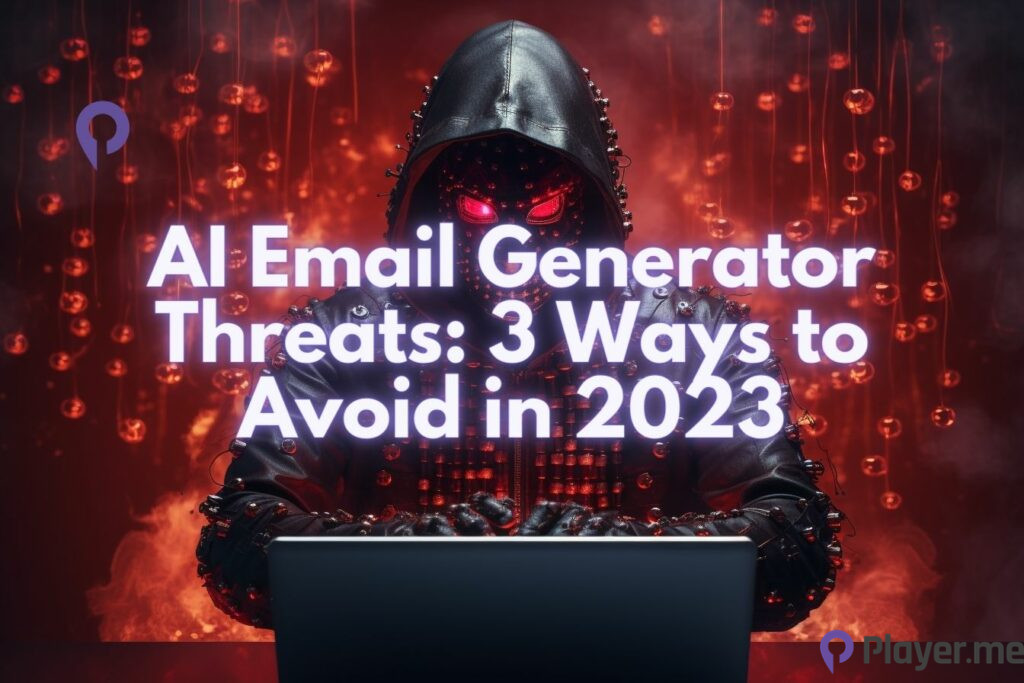AI email generators have become a popular tool for cybercriminals looking to launch sophisticated Business Email Compromise (BEC) attacks. These tools use artificial intelligence algorithms to create fake emails that appear to be from a legitimate source, such as a CEO or CFO. The emails are designed to deceive employees into transferring large sums of money to fraudulent bank accounts.
Also Read: Decoding AI in 2023: Embracing 7 Ethical Challenges

What Is An AI Email Generator?
The AI email generator uses machine learning algorithms to analyse the writing style and language usage patterns of the targeted executive’s previous emails. This allows the generated emails to closely mimic the tone, syntax, and grammar of genuine emails, making them highly convincing. Additionally, the AI email generator can insert personalised information and company-specific details to make the emails appear even more authentic.
Also Read: AI Is a Pandora’s Box: Menacing the Human Race in 2023
How Do Criminals Use AI Email Generator to Attack?
To carry out an attack, the cybercriminal would first need to obtain access to the targeted executive’s email account or gather enough information about their communication style. Once they have this information, they can use the AI email generator to craft a convincing email requesting an urgent fund transfer. The email might include logical reasons for the transfer, such as a confidential acquisition or an emergency expense, and provide instructions on where to send the funds.
Also Read: AI Voice Scams: What You Need to Know in 2023

Unfortunately, these AI-powered phishing attacks can be challenging to detect, especially since they often use logos and branding to make them look like legitimate communications. However, there are steps organisations can take to protect themselves. Implementing robust security protocols, educating employees on the dangers of BEC attacks, and regularly updating software and systems can all help prevent falling victim to these sophisticated scams.
Also Read: Unleashing the AI-Robot Revolution 2023: Empowered Capabilities, Autonomy, and Beyond
3 Tips for Prevention and Detection
To prevent falling victim to AI email phishing scams, we recommend companies start implementing 3 tips to protect personal and company important data:
1. Two-Factor Authentication
Two-Factor Authentication (2FA) adds an extra layer of security to the login process, making it more difficult for attackers to gain access to systems. 2FA requires users to provide two forms of verification, such as a password and a fingerprint or a password and a one-time code sent via SMS. This makes it much harder for attackers to gain unauthorised access, as they would need to have not only the user’s password but also the second form of verification.
2. Verify the Sender
Verifying sender information can help identify emails that may not be from legitimate sources. Training employees to recognise suspicious emails can help them identify potential threats and report them accordingly. Implementing email filters can help block suspicious emails from reaching employee inboxes, reducing the likelihood of a phishing attempt. Additionally, setting up incident response plans can help organisations quickly respond to and contain phishing attacks if they do occur.
3. Employee Training
Using AI-powered tools to detect and flag suspicious messages before they reach employee inboxes can help reduce the risk of attacks. These tools can analyse emails for unusual patterns and anomalies, and flag them for review by IT staff. Educating employees on how to identify and report phishing attempts can also help reduce the risk of a successful attack. By training employees to recognise the signs of a phishing email, such as urgent or threatening language, misspellings, or suspicious links, they can better identify potential threats and report them to IT or management for further investigation.

All in all, AI is a dangerous tool that cybercriminals are using to launch sophisticated BEC attacks. These attacks can result in significant financial losses for organisations, so it’s important to take preventive measures and stay vigilant. By implementing the recommended security measures and staying aware of the latest tactics used by cybercriminals, organisations can reduce their risk of falling victim to its attacks.
Frequently Asked Questions
How Do I Protect Myself From AI Email Phishing Scams?
To prevent such attacks, businesses should install 2FA to give an additional layer of security to the login process, validate sender information to identify unusual emails, and train staff to recognise and report potential risks to defend themselves from phishing scams. Another way is to use AI-powered systems to identify and flag suspect messages before they reach employee inboxes.
Can AI-Generated Phishing Emails Be Detected by Existing Security Systems?
To improve detection rates against AI email phishing scams, organisations should combine technical controls and human expertise. Strategies include deploying advanced threat detection solutions, network segmentation, enhanced incident response, employee education, collaborative threat intelligence sharing, partnering with MSSPs, and regular software updates.
What Legal Action Can Be Taken Against Cybercriminals Who Use AI Email Generators for BEC Attacks?
Cybercriminals who use AI email generators for BEC attacks can face various legal consequences, including wire fraud charges, identity theft charges, and civil lawsuits. The specific legal consequences will depend on the jurisdiction and the severity of the offence.





